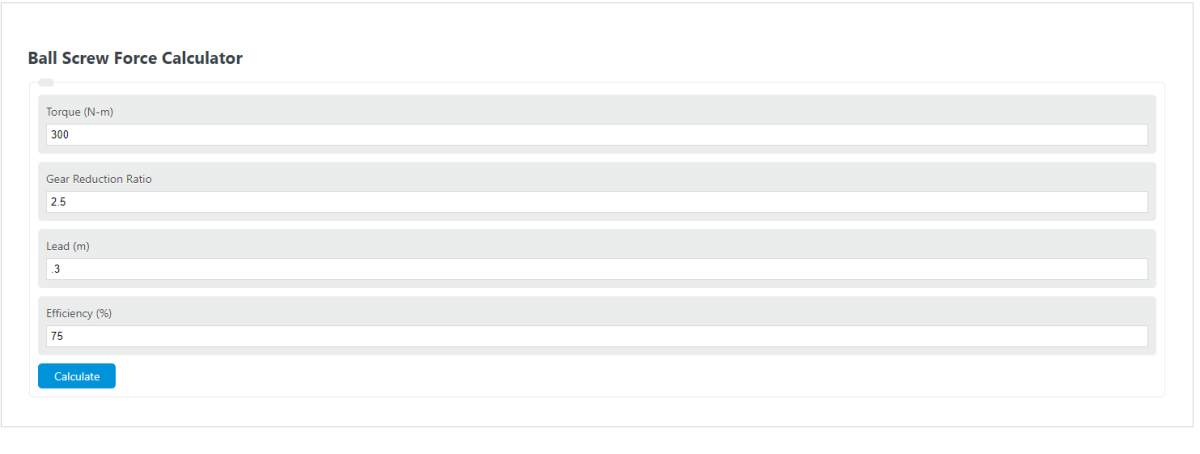Enter the torque, gear reduction ratio, lead, and efficiency into the calculator to determine the ball screw force.
- All Force Calculators
- Screw Jack Force Calculator
- Ball Screw Life Calculator
- Lead Angle Calculator
- Winch Line Pull Force Calculator
- Lead Screw Efficiency Calculator
Ball Screw Force Formula
The following equation is used to calculate the ball screw force.
F = T * 2 * PI * GRR / (L*E)
- Where F is the force (N)
- T is the torque (N-m)
- GRR is the gear reduction ratio
- L is the lead (m)
- E is the efficiency
To calculate the ball screw force, multiply the torque by 2 times pi times the gear reduction ratio, then divide by the product of the lead and efficiency.
What is a Ball Screw Force?
Definition:
A ball screw force results from combining two forces that act in opposite directions: the axial thrust and radial thrust. The axial thrust is created by the torque applied to the nut while rotating. This force acts axially and is usually transmitted through the balls themselves. Since a ball screw rotates, a centrifugal effect causes the balls to move towards the outside edge of the nut. This radial thrust creates a second force that acts on the nut flange, which results in a friction force between the nut and support bearings.
Both types of forces are influenced by several factors:
● The hardness of the balls
● The diameter (or lead) of the screw
● The number of balls used in each load zone
● The number of load zones in the housing,
● The number of supports or contact points in each row
How to Calculate Ball Screw Force?
Example Problem:
The following example outlines the steps and information needed to calculate the Ball Screw Force.
First, determine the torque. In this example, the torque is 300 N-m.
Next, determine the gear reduction ratio. The gear reduction ratio for this problem is 2.5.
Next, determine the lead distance. In this case, the lead is .3m.
Next, determine the efficiency. This ball screw system has a 75% efficiency.
Finally, calculate the ball screw force using the formula above:
F = T * 2 * PI * GRR / (L*E)
F = 300 * 2 * 3.14159 * 2.5 / (.3*.75)
F = 20,943.9 N
